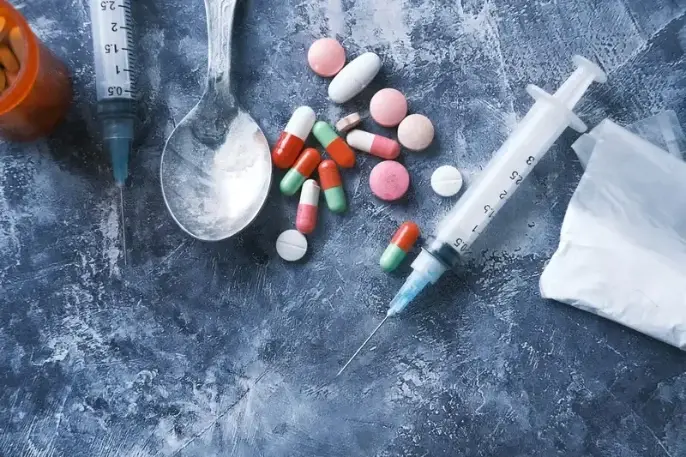
However, some people misuse DXM to achieve the feelings of euphoria it creates when taken in doses of 250–1,500 mg — much higher than the therapeutic range. At lower doses, PCP can cause feelings of detachment from a person’s surroundings and self, slurred speech, and loss of coordination. 251-NBOMe is a synthetic substance originally developed by neuroscience researchers. MDMA stands for 3,4-Methylenedioxymethamphetamine, and is a recreational psychoactive drug. Some psychedelics come from plants or mushrooms (often referred to as “magic mushrooms”), while others are synthetic and manufactured by humans.
Psychedelic and Dissociative Drugs as Medicines
- Mulligan is working on a plan for these states to form a coalition to develop a generic ibogaine using their pooled opioid settlement funds.
- In fact, today these compounds are more often discussed in terms of their anti-addictive properties (e.g. Bogenschutz et al., 2015; Johnson et al., 2017).
- MDMA stands for 3,4-Methylenedioxymethamphetamine, and is a recreational psychoactive drug.
- There may well be a place for psychedelic therapy in addiction treatment, but there are obstacles.
The emergency and referral resources listed above are available to individuals located in the United States and are not operated by the National Institute on Drug Abuse (NIDA). NIDA is a biomedical research organization and does not provide personalized medical advice, treatment, counseling, https://ecosoberhouse.com/ or legal consultation. Information provided by NIDA is not a substitute for professional medical care or legal consultation. Ololiuqui is a naturally occurring psychedelic that is found in the seeds of the morning glory flower, which grows in Central and South America.
The 500 Greatest Albums of All Time
- A second group was hooked up to levers that injected mere saline solution.
- “My first and only objective that I have in life right now,” he says, “is to try to do everything that I can in whatever way I can to advance [ibogaine’s] availability as quickly as we can.”
- There are also medication-assisted recovery treatments for opioid, alcohol, cocaine, and cannabis-use disorders.
- The FDA has only formally approved the drug for use during surgery, but its availability allows doctors to prescribe it “off-label” for various mental and physical ailments.
While current evidence suggests that ibogaine is “at least as good as and potentially more effective than other treatments for opioid use disorder,” Davis says, it’s “very difficult to know for sure” because clinical trials have yet to be completed on the drug. He and his colleagues are trying to at least partly fill that knowledge gap by conducting an FDA-informed real-world survey of people who have used ibogaine to address addiction or other disorders. For now, a “degree of skepticism is warranted,” he adds—but that will hopefully change as more data are collected about ibogaine’s effectiveness.

The Psychedelic Arsenal: Nature’s Mind-Bending Medicines
NIDA conducts and supports research to better understand how often and to what extent people experience tolerance, withdrawal, and other substance use disorder symptoms related to the use are psychedelics addictive of psychedelic and dissociative drugs. Mark Guckel had struggled with crack addiction since high school. Despite numerous attempts to overcome his substance use disorder, nothing helped.

Although Halpern and Pope (2003) suggest that there may be no identifiable risk factors for HPPD, a subsequent study of 19 individuals who developed HPPD found that all recalled anxiety and/or panic reactions during the triggering episode (Halpern et al., 2016). Thus, HPPD symptoms could potentially be conceived as a form of trauma response, similar to PTSD, or a form of health anxiety evoked by residual symptoms of the original experience. In Carbonaro et al.’s (2016) online survey about challenging experiences after consuming ‘mushrooms’, 11% of users reported putting themselves or others at risk of physical harm. This was often related to greater (estimated) dosage, difficulty of the experience and lack of physical comfort and social support – all of which can be controlled under clinical conditions. There are no specific treatments for drug use and substance use disorder (SUD).
Public Health
“There’s been an enormous amount of attention for the potential use of psychedelic drugs, for the treatment of depression, post-traumatic stress disorder, [and] for the treatment of addictions,” says Volkow. The intricate relationship between psychedelics and addiction reveals a complex yet promising landscape for therapeutic, medicinal, and self-introspective uses. Despite the absence of physical addiction, it remains critical to approach psychedelic use with respect, caution, and due diligence. These substances induce intense experiences that can be challenging to navigate, particularly without the right preparation, as well as set and setting.

It’s like a factory reset for the brain’s reward system, potentially alleviating withdrawal symptoms and reducing cravings. In 2004, a team of pharmacologists at the University of Michigan Medical School, led by William Fantegrossi, set out to test the addiction potential of psilocybin — a hallucinogenic compound derived from certain mushrooms — on a cohort of rhesus monkeys. The researchers presented one group of primates with a lever that, when pressed, injected them with a dose of the compound.
- These retreats often focus on deepening self-awareness, refining therapeutic skills and fostering a supportive community among participants, ultimately enriching their practice and personal well-being.
- This article explains how psilocybin works, including the potential effects and risks.
- The U.S. Food and Drug Administration has yet to approve the use of psilocybin for therapeutic use.
- Treatment is available if you need help with substance use or misuse.
- Another trial is investigating whether administering subanesthetic doses of ketamine during emergency care might help reduce drug use and suicide risk among people with opioid use disorder.
- In a cross-sectional study, Doering-Silveira et al. (2005) compared adolescent ayahuasca users with matched non-user controls using a battery of neuropsychological tests and found no neurological deficits in users.
- This involves flashbacks of a prior drug experience that can happen without warning and cause significant distress or impairment.
- Factors such as dosage, environment, and personality play a role in how psychedelics affect people.
- In addition to producing visual hallucinations, euphoria, and mystical experiences, psychedelics have other effects that underlie their recreational use.
- Psychological dependence on hallucinogens is a form of mental or emotional addiction.
First synthesised by Albert Hofmann in 1938, LSD is a semi-synthetic tryptamine derived from the naturally occurring ergot alkaloid ergotamine (Nichols, 2004). It acts primarily as a serotonergic receptor agonist and also acts at dopaminergic and adrenergic receptor sites (Nichols, 2004). Having been described as a ‘problem child’ (Hofmann, 1979), LSD became a major focus of negative public perceptions, many of which still prevail today. This highlights the importance for clinicians and therapists to keep to the highest safety and ethical standards. It is imperative not to be overzealous and to ensure balanced media reporting to avoid future controversies, so that much needed research can continue. A provider will place the person in a quiet room with little sensory stimulation.
Are psychedelic or dissociative drugs already approved as medicines?

However, at least one psychedelic, lysergic acid diethylamide (LSD), can cause tolerance. Tolerance means that a person may need to take higher dosages to achieve the same effect. While MDMA would be a first-of-a-kind approval, U.S. doctors and the FDA itself have already laid some of the groundwork for working with drugs that can cause intense, psychological experiences. The approach was studied in nearly 195 adults with moderate-to-severe PTSD who were randomly assigned to undergo the therapy with MDMA or with a dummy pill.
With adequate inclusion and exclusion criteria and clinical supervision, adverse physiological reactions are minimal (Malleson, 1971; Muttoni et al., 2019). As emotional experiences can be intensified when under the influence of psychedelics, set and setting are crucial. Set and setting – the expectations and personal experiences of the users as well as the external environment – are established elements of psychedelic research and recognised as having a major impact on users’ experience (Aday et al., 2021; Johnson et al., 2008). In unprepared individuals and/or in unsafe settings, effects of psychedelics may have the potential to escalate into dangerous behaviour (Johnson et al., 2008). Although very rare, there are reports of individuals jumping from buildings and ending their lives (e.g. Honyiglo et al., 2019; Keeler and Reifler, 1967). While these occurrences are uncommon compared with other psychoactive drugs – especially alcohol – they are widely reported in the media which contributes considerably to public perceptions of their risks.

Leave A Comment